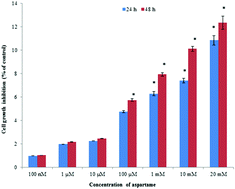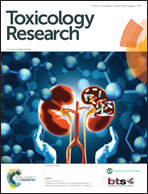Cytotoxic effects of aspartame on human cervical carcinoma cells
Abstract
Aspartame is used as an artificial sweetener in more than 6000 food varieties. The present study aims to determine the effects of aspartame at various concentrations on the cell viability, morphology, ROS level and DNA of human cervical carcinoma cells over two time periods of exposure. The effects of aspartame on HeLa cell viability were investigated using the sulphorhodamine-B assay (SRB assay) and flow cytometry. Alkaline comet assay was carried out to determine the possible DNA damage induced by aspartame. Mitochondria-derived reactive oxygen species (ROS) were determined using 2′,7′-dichlorodihydrofluorescein diacetate (DCFH-DA). Fluorescence microscopy was used to determine the presence of apoptotic and necrotic cells following aspartame treatment. Cell viability was significantly altered following a higher concentration of aspartame exposure. Mitochondria-derived ROS increased at higher concentrations of aspartame exposure. Exposure to 10 mM and 20 mM of aspartame induced DNA fragmentation. Apoptotic and necrotic bodies were found in the range of 1–20 mM aspartame exposure. Exposure to high concentrations of aspartame may alter cell viability and morphology, and it may induce ROS generation and DNA damage in cervical carcinoma cells.


 Please wait while we load your content...
Please wait while we load your content...